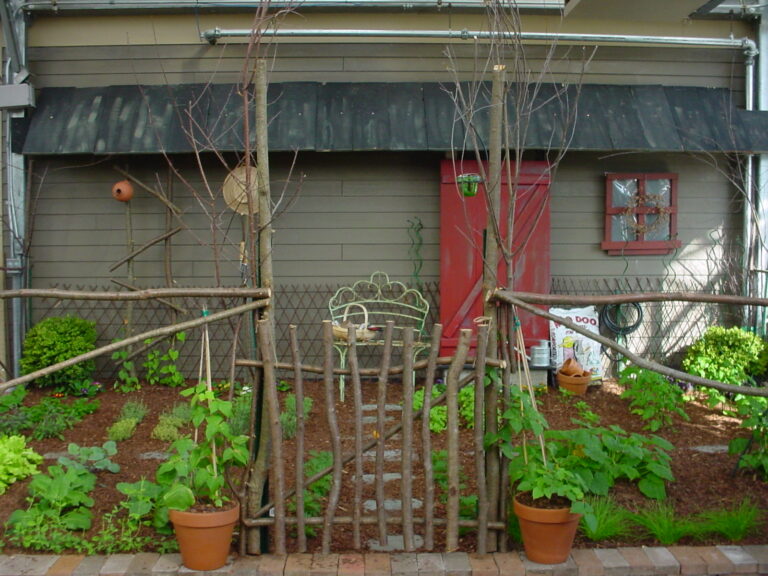Starting a Vegetable Garden

Regardless of what type of garden you want, you need to start with a plan. And before you can think about where it’s going or what size you’ll need, you should think about what plants you want to consume or to enjoy.
Vegetable Gardens Need Sun
For a vegetable garden, plant your garden in FULL SUN or a spot with 6 or more hours of direct sun.
Plant vegetables that you will use in quantities that you can water and weed (daily in the summer!) as well as consume in your family. Don’t forget that wildlife will happily eat your veggies, too! Design your garden with room for a fence or other barrier. Then perhaps you can add an “extra row” for the local food pantry.
Your full sun location may not be very large in the ground but maybe you can grow in large containers on a patio or sidewalk that gets full sun.
Don’t overcrowd Your Plants
If you have a 4′ x 4′ raised bed or garden area, think about how many plants will fit. Here’s a link to a series of garden plans for Spring, Summer, and Fall Vegetables in the same 4×4 square from Better Homes & Gardens. You’ll see how many plants will fit in each 1×1 square. Remember, harvesting some vegetables makes room for others through the growing season. For the next 2 to 3 growing seasons, rotate crop families to a different square before planting again in the orginal location. Use these to visualize what you can do with the space you have.
The Vegetables you will eat may have different cultural requirements.
Take your cues from what your desired plants need for success – for example:
Tomatoes need deep soil rich with calcium that is well-drained in FULL SUN. If the variety blooms until frost, the vines need a stake or other support.
Lettuces and greens need relatively shallow 6-10″ of soil, well-drained and part sun to full sun. They especially like afternoon shade.
Once you know all the plants and quantities, then decide how much growing area is required. Raised beds work well if your local soil is on ledge, is heavy clay or very rocky. Some vegetables will do even better in large containers.
Consider the soil you will be using. If using existing top soil, what type of soil do you have? You may need to amend it to get the best growth. Get a soil test for your property. Link to UMass Extension Soil test service.
Routine soil tests measure pH which reflects the acidity of the soil where 7 is neutral. pH affects how well the plant can take up nutrients to photosynthesize and grow. Most Berkshire soils are slightly acidic: 6.5 to 6.8 maybe 7. Vegetables do well in around 6.8 soil. Blueberries do better in 5.5 to 6.0 soil so would need some acidifier added. The soil test will tell you how much lime or acidifier to add.
The Right Tool Makes Gardening Easier
Think about what tools you will need: a spade, steel rake, edger, garden fork, long-handled claw, spring rake, hand trowel, rigid hand rake, hori-hori knife. The right tools make gardening tasks simpler and easier.
If you are digging new garden beds, wait until snow has cleared and ground mostly thawed, then map out the area needed with stakes and twine, keeping in mind the mature size of your plants and the path of the sun.
In late April, Ward’s will have cold-hardy vegetable starts like kale, beets and lettuces. Peas can be planted in the garden as soon as soil is workable. You’ll want to prepare your garden area before purchasing and installing plants or sowing seeds. CLICK HERE for a Veggie Garden Planning Tip Sheet from Pat Parkins of Gardens of the Goddess.
Tomato, pepper and eggplant starts are usually available by mid-May. Squash starts arrive in late May (but you can start your own seeds of squash at that time in the garden).
Or here is a rough outline in printable PDF from Ron Kujawski on tips for Growing Small Vegetable Gardens: Growing Small Gardens
To dig deeper into these steps (ha-ha), watch this thorough webinar slideshow presented by Massachusetts garden expert, author and Berkshire resident, Ron Kujawski. You will need to register to watch it. It lasts about 1.25 hours. This was presented to the local volunteers of the Western Massachusetts Master Gardeners (WMMGA – Link to WMMGA website.) and the WMMGA has made it available to everyone through Ward’s Nursery & Garden Center. Registration alerts you to more informational webinars from this volunteer organization.
Our Summer Garden Advice
By mid-summer, perennial gardens can start to look overgrown, annual flowers begin to fade, and bugs may be munching on your vegetables.
Summer Articles